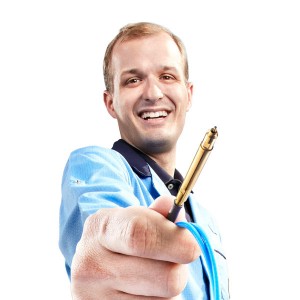
NEDME’s technical sessions aim to give attendees valuable information from industry experts across a wide range of topics. This year, Matthias Zapatka of INGUN USA will give an introduction to RF and high current probing solutions for production line testing, and he shared a few of his insights and experiences with us in advance of his presentation.
What has been one of your favorite work projects in the last few years?
My favorite project has been to “marry” the concepts of a fine-pitch on-wafer type RF probe with those of a conventional spring-loaded probe for production line testing. We built something completely new with that which did not exist before and it may pave the way for automated testing in the future on RF and millimeter-wave components and circuits.
Tell us about a change you see coming in the industry, and a way in which companies should be positioned to meet it.
Change… well everything we do these days gets so automated that we tend to forget that it takes humans to make the final adjustments to make something work. To give an example from the world of RF where I am involved in to develop test probes: We tend to automate tasks such as trace routing in layout programs but then may find out that such auto-routing can create extreme difficulties for RF and high speed digital signals. As 5G solutions are already within reach, we need bright engineers to overcome challenges in the production test field for RF and millimeter wave applications pave the way for conducted and OTA testing. Not every task can be done in an automated way – therefore let’s not try to over-automate everything. Esp. in the RF field, companies should focus on hiring personnel with plenty of hands-on experience to troubleshoot and improve circuits rather than trying to simulate everything and learning later on that the concept does not work as it should. Get people who are on fire about electronics and who also tinker in their spare time, hire ham radio enthusiasts or scout for personnel at maker faires rather than letting HR scout the resume for people from an ivy league school who may be the brightest behind a computer screen but in practice may hold the soldering iron at the wrong end (ouch).
What is one thing that you hope people will take away from your presentation?
We want to highlight some ideas behind proper design for test for RF boards with spring-loaded probes. The audience will learn what the pitfalls are and how to overcome these with a good design strategy for their boards. That is a first step towards even higher data rates in the future, which at this point could only be successfully tested with on-wafer probe type architectures but soon will require robust and ruggedized spring probe solutions which are suited for automated production-line testing. Also going away from the RF field, we give insights in probing for the high current arena and the audience will learn that it takes more than just selecting a catalog probe to safely transmit electrical current in the hundred Amp and more range to temporarily make contact with a device under test.